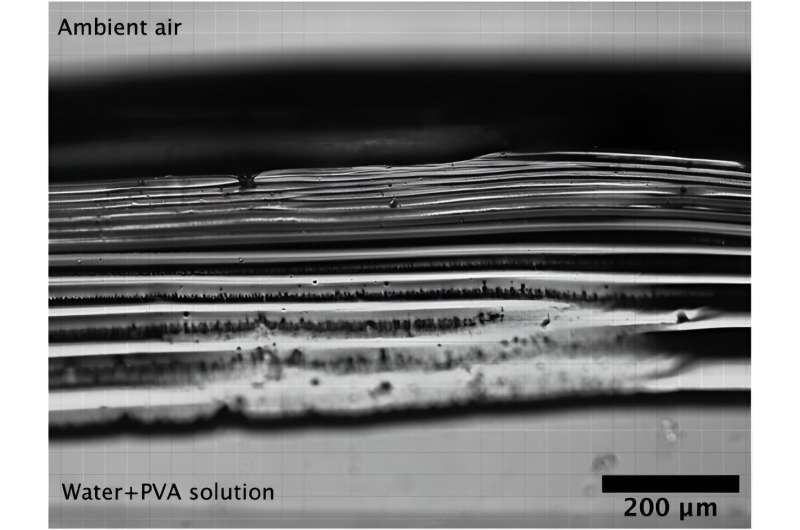December 20, 2023 report
This article has been reviewed according to Science X's editorial process and policies. Editors have highlighted the following attributes while ensuring the content's credibility:
fact-checked
peer-reviewed publication
trusted source
proofread
Why paint does not dry slower in a humid environment

A team of physicists at The University of Edinburgh working with an infection and immunity specialist with the university's Roslin Institute has, via experimentation, validated a theory to explain why paint dries at the same rate regardless of humidity levels. The study is published in Physical Review Letters.
Common sense suggests that paint should dry faster on an outdoor fence on a dry day than when it is humid because evaporation occurs faster when the air around a liquid source is drier. But anecdotal evidence suggests this is not the case for paint and other liquids. Six years ago, chemist Jean-Baptiste Salmon and colleagues developed a theory to explain why this is the case. They suggested it is because large molecules in the liquid are pulled to the surface during evaporation, forming a 'polarization layer' that inhibits evaporation, and by extension, drying. In this new effort, the research team conducted an experiment to test this theory.
The researchers drilled five holes into a squat, round cylinder and inserted glass capillary tubes in a horizontal position—each was then sealed in place. They then added a quantity of polyvinyl alcohol into the cylinder, which they placed on a scale. They poured a thin layer of oil on top of the liquid to prevent surface evaporation.
The final touch involved placing an RH-controlled air flow box over the top of the cylinder to allow for controlling humidity levels. The team then ran multiple 17-hour trials to determine evaporation rates (using the scale to measure how much liquid evaporated) from the tubes at different humidity levels, ranging from 25% to 90%.
The researchers found that as expected, evaporation rates remained constant for approximately three hours. But then, rates plummeted, as was theorized by Salmon, regardless of humidity levels. The evaporation rate did not decrease as humidity increased during the initial three hours. However, the theory only appeared to hold for humidity levels up to 80%—at rates higher than that, evaporation did slow down, which the team suggests was likely due to some other force.
The researchers suggest their work could have medical applications as recent research efforts have shown that respiratory droplets tend to form skins similar to those seen in the experimental apparatus.
More information: Max Huisman et al, Evaporation of Concentrated Polymer Solutions Is Insensitive to Relative Humidity, Physical Review Letters (2023). DOI: 10.1103/PhysRevLett.131.248102
Journal information: Physical Review Letters
© 2023 Science X Network





















